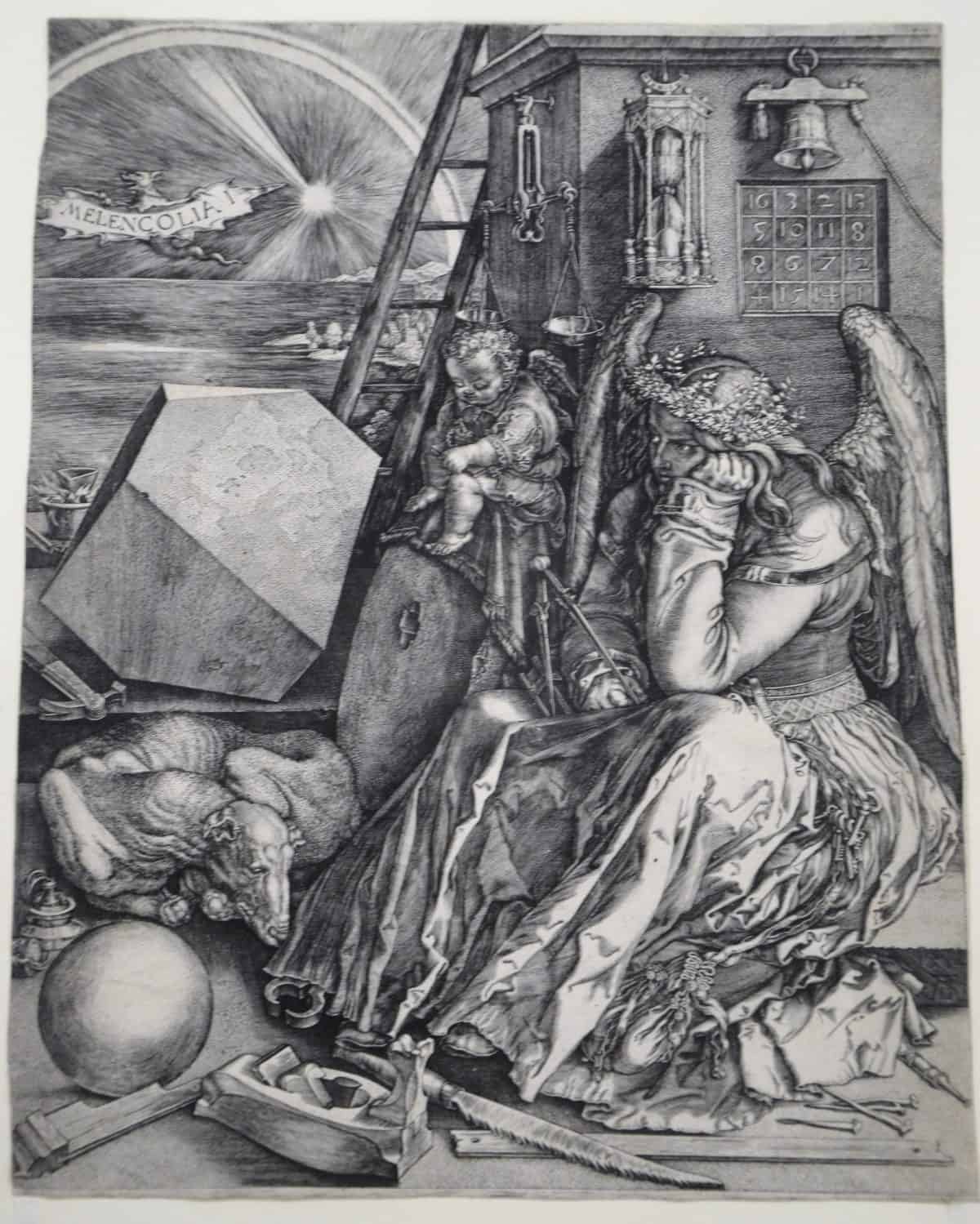Albrecht Durer (1471-1528) Melancholia Engraving, 235 x 183 mm Folkestone Museum (Master Collection) F.3644.175 The dog is lying curled up on the left. It is a greyhound, known for its speed. The tools lying at the front would be used by a carpenter. The one centre left is a plane. It contains a sharp blade and is pushed by the handle to remove thin strips of wood. The tool centre right is a saw, with jagged teeth. There are also tongs peeping from below the skirt-hem of Melancholy, a straight edge below the saw, and some iron nails. Can you find a hammer? These carpentry tools and nails allude to the crucifixion of Christ. On the wall to the left of the bell are an hourglass and a set of scales. The hourglass and bell represent Time. The scales are a reminder that Christians believed good and bad things done by someone during their life would be judged at their death, to decide if they went to Heaven or Hell. The winged cherub is sitting on a millstone beside a ladder. A millstone can make you sink, while a ladder can take you up high. The rainbow behind symbolises hope. Melancholy is holding dividers or compasses. Along with the sphere and polyhedron, these symbolise Geometry. Behind the polyhedron is a crucible, used by alchemists who tried to turn ordinary metal into gold. At her waist Melancholy has keys, signifying power. The purse at her feet is wealth. Durer’s print is about the difficulties of creativity. Melancholy is a form of depression and was linked to creative genius. This print is one of Durer’s master engravings – his best works, for which he was most famous. (The Folkestone print is one of many copies made by contemporaries of Durer.) Durer made both engravings and woodcuts, and was the most important early printmaker.

